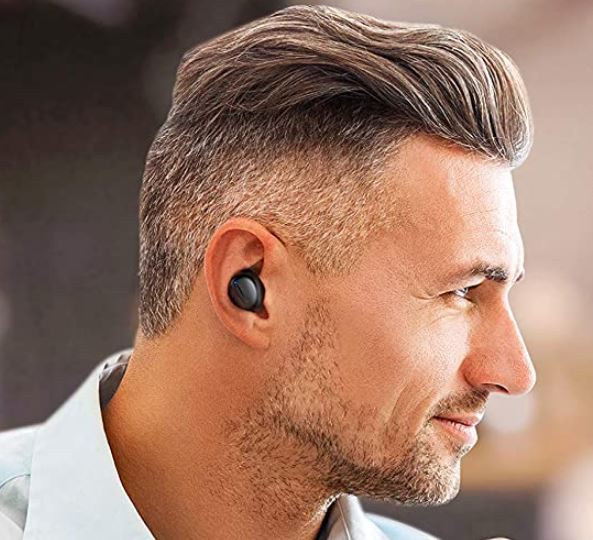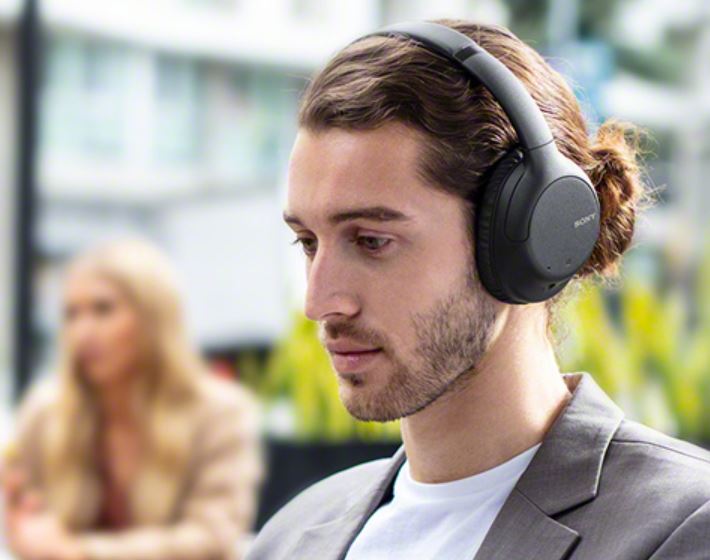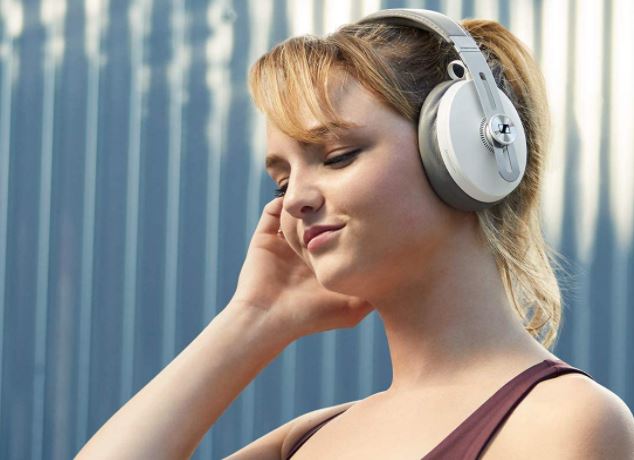Few things are more enjoyable than putting on a good pair of headphones and listening to your favorite band. No matter where you are, no matter what you’re doing, you can escape to your own private world. At least, that’s the case in theory. In practice, there’s almost always some background noise. If you’re in the office, there’s the hum of the HVAC system and the low murmur of conversation. If you’re on a plane, there’s the engine noise to deal with. But that’s nothing compared to the crowd noise in the airport terminal, before and after your flight. If you want to tune out the world, you’re going to need more than just noise.
In fact, you’re going to need the opposite of noise. You’ll need noise-cancelling or sound-isolating headphones. With these technologies, you can keep the outside noise where it belongs, and focus on your music. So, are noise-cancelling and sound-isolating earbuds the same thing? Not in the slightest. The two technologies share a common goal, but that’s about it. Their actual function is entirely different.

Noise-cancelling headphones use advanced technology to cancel out any incoming noise. The noise may enter the headphone ear cups or get inside the earbuds, but it gets erased by the anti-noise. Sound-isolating earbuds, on the other hand, are exactly what they sound like. They isolate your ears, and prevent outside noise from getting inside to begin with.
Which one of these technologies is best? It’s tough to give a simple, one-size-fits-all answer. To really understand why you might want one or the other, you’ll need to know how the technology works. Let’s take a look under the hood, and dig into the inner workings of noise-cancelling and sound-isolating technology. At that point, we’ll be better-equipped to talk about which is better. Let’s get started!
Noise-Cancelling Headphones – the Basics
Noise-cancelling headphones and earbuds are often called ANC headphones, which is short for “active noise cancelling.” ANC headphones and earbuds utilize the magic of science to literally erase incoming noise before it hits your ears. This can be accomplished because sound consists of a set of pressure waves in the air. These waves hit your eardrum, which causes it to vibrate, and sending a signal to your brain. Your brain then converts that signal into what we perceive as sound. So the meat of any sound is a physical pressure wave, and physical pressure waves can be manipulated.
You can picture a sound wave as an oscillating wave, with a series of high points and low points. ANC headphones simply create “anti-noise” with an opposite waveform to your background noise. When the background noise is at its peak, the anti-noise is at its low point, and vice-versa. As a result, combining the two waves gets you a flat line — silence. If that’s still too abstract, think about adding 10 and -10, to get zero.

For this to work, you need three things: some speakers, an ANC chipset, and a microphone. The speakers or drivers are needed to produce anti-noise, but you already have those built into your headphones! The ANC chipset is responsible for producing the anti-noise. It analyzes background noise and calculates the appropriate inverse wave to create anti-noise. It then sends that noise to your drivers for playback. The ANC algorithm might be complex, but the concept itself is pretty straightforward.
The microphone is required to pick up background noise. Otherwise, the ANC chipset won’t have any way to create the proper anti-noise! The mics can be located inside the ear cups, outside the ear cups, or both. Each type of placement offers its own costs and benefits.
A well-designed pair of ANC headphones or earbuds is capable of reducing noise by as much as 20 decibels. Decibels are a logarithmic scale — scientists love logarithms — so 20 decibels equates to about 70 percent. This means that good ANC systems can reduce a jet engine to a low background hum.
That said, ANC technology has a couple of downsides worth noting. For one thing, it doesn’t treat all sound equally. It’s reactive, not proactive, which means that sudden sounds can pop through easily. For instance, if someone honks their car horn just behind you, you’ll hear it. If they hold the horn down, you’ll stop hearing it after a few milliseconds. But it will still make you jump. ANC is best for steady or semi-consistent background noise. In addition, the ANC chipset requires energy to operate, which puts extra demand on your batteries. Depending on the earbuds or headphones, it can cut your battery life in half! Then again, most ANC headsets give you the option to turn noise cancelling off.
Because ANC chipsets take up space, they’re more often found on headphones than on earbuds. That said, you can get some good ANC earbuds if you’re willing to pay a small premium. One good choice is the Aukey Key Series T18NC Bluetooth Earbuds. The noise cancellation works very well, and the neck band helps you keep from losing them.

Sound-Isolating Headphones – the Basics
ANC is an advanced solution that relies heavily on modern technology. Sound isolation, on the other hand, only relies on modern material. If you’ve got silicone, you can make a pair of sound-isolating ear tips. That’s literally all it takes. Silicone ear tips provide a seal against the inside of your ears. This is the 21st-century version of putting your fingers in your ears to keep from hearing people. Good sound isolation can be very effective, and can block both sudden and constant sounds.
As with ANC, though, there are a couple of factors to consider. First, sound isolation requires a good fit. If the ear tips are too small, they’re not going to block anything out. If they’re too big, you either won’t be able to get them in or they’ll be uncomfortable. Thankfully, most sound-isolating earbuds come with at least three different sizes of ear tip. If the standard tip isn’t right for your ears, try a larger or smaller one as needed.
Another thing to be aware of is that sound isolation isn’t terribly useful on headphones. There are some models available with ultra-thick padding that does a better job than most pairs. But even with those admirable efforts, you’re not getting the kind of seal you will with earbuds. There’s no little silicone tip forming a vacuum seal against your skin!
On the other hand, sound isolation is so easy to achieve that most earbuds have at least some form of it. There are many effective options here, but one of the best is the TRANYA B530 True Wireless Earbuds. They offer excellent audio and long-lasting batteries, so you’re getting more than just good sound isolation.
Other Options
We’d be remiss if we didn’t mention a couple of other options you should be aware of. The first is that some ANC headphones and earbuds come with a feature called “transparency mode.” In transparency mode, outside noise is actually amplified and played back by the speakers. This obviously won’t help you enjoy a more peaceful listening experience. However, it makes short social interactions easier. Instead of taking off your headphones or taking out your earbuds, you just push a button before chatting. When you’re done, just turn transparency mode off and get back to your music.
Another option is simply to make the music louder. You can forego ANC entirely, and use a Bluetooth speaker to fill the entire room with sound. If that sounds more appealing, consider the Tronsmart Force 2 Bluetooth Speaker. It’s a powerful, 30-watt speaker that can be paired with multiple other units to cover an even wider area. Then again, this isn’t terribly practical for airplanes, or anywhere else in public.

Our Verdict
So, which one of these technologies is the best choice? As is so often the case, a lot depends on what you need. But in this case, it doesn’t just depend on what kind of noise protection you need. It also depends on what type of headset you’re using. If you want a pair of headphones, sound isolation isn’t really an option. At best, you can get a pair with lush padding that blocks out some noise. But only a tight silicone seal is really going to give you true sound isolation. Earbuds give you the choice between ANC and isolation. That said, ANC earbuds tend to cost more than their sound isolation-only counterparts.
As for effectiveness, ANC earbuds with snug, sound-isolating tips are the best for obvious reasons. You get the best aspects of both technology. With passive sound isolation alone, you get protection from high and low sounds, as well as sudden noises. But by its very nature, sound isolation can only be so effective. ANC provides a more effective reduction in volume for most sounds. On the other hand, it’s not as well suited for sudden noises. Depending on where the mics are located, it may also struggle with high or low sounds. As you can see, there’s no right or wrong choice here, but you’ll want to weigh your options carefully.
Meet Ry, “TechGuru,” a 36-year-old technology enthusiast with a deep passion for tech innovations. With extensive experience, he specializes in gaming hardware and software, and has expertise in gadgets, custom PCs, and audio.
Besides writing about tech and reviewing new products, he enjoys traveling, hiking, and photography. Committed to keeping up with the latest industry trends, he aims to guide readers in making informed tech decisions.

